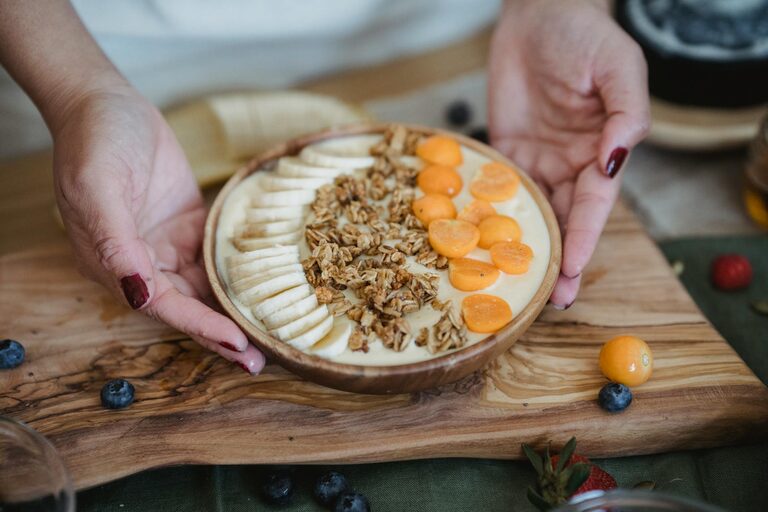Planning balanced meals doesn’t have to be overwhelming or time-consuming. With a little organization and practical strategies, you can create nutritious, satisfying meals that support your health and fit your busy schedule. Whether you’re a beginner in the kitchen or looking to improve your meal planning habits, these friendly tips will help you plan balanced meals without stress.
What Is a Balanced Meal?
Before diving into planning, it helps to understand what a balanced meal includes. A balanced meal typically has:
– Protein: Supports muscle repair and keeps you full (e.g., chicken, beans, tofu).
– Healthy Fats: Essential for brain health and energy (e.g., olive oil, nuts, avocado).
– Carbohydrates: Provide energy (e.g., whole grains, vegetables, fruits).
– Fiber: Aids digestion and keeps you feeling full (e.g., vegetables, fruits, legumes).
– Vitamins and Minerals: Vital for overall health, found in a variety of colorful foods.
Aim to include all these components in your meals to create harmony on your plate.
Why Plan Meals?
Meal planning can feel like extra work initially, but it offers many benefits:
– Saves time and reduces daily decision fatigue.
– Helps you make healthier choices.
– Minimizes food waste and saves money.
– Reduces stress around mealtime.
By planning ahead, you set yourself up for success in maintaining a balanced diet.
Step 1: Assess Your Schedule and Needs
Start by reviewing your week. Consider:
– How many meals will you cook at home versus eating out?
– What are your busiest days?
– Do you have time to cook from scratch or prefer quick recipes?
– Any dietary restrictions or preferences to consider?
Understanding your lifestyle helps tailor a plan that works for you.
Step 2: Choose Simple, Versatile Recipes
Keeping recipes simple is key to stress-free planning. Look for:
– Meals with a few ingredients that are easy to prepare.
– Recipes that can be batch-cooked and stored.
– Dishes that use similar ingredients across meals to minimize shopping.
For example, grilled chicken, roasted vegetables, and quinoa can be mixed and matched throughout the week.
Step 3: Build a Balanced Meal Framework
Use a simple framework to ensure balance:
- **Start with Protein:** Choose one protein source per meal.
- **Add Vegetables:** Fill half your plate with a variety of colorful veggies.
- **Include Whole Grains or Starchy Veggies:** For energy and fiber.
- **Add Healthy Fats:** Like olive oil for cooking or a handful of nuts.
This structure can help you customize meals easily without overthinking.
Step 4: Make a Meal Plan and Shopping List
Plan your meals for the week by writing down the dishes for each day. Create a shopping list based on your recipes to avoid last-minute trips to the store.
Tips for effective shopping:
– Organize your list by store sections.
– Stick to whole, minimally processed foods.
– Check your pantry before buying duplicates.
Step 5: Prep Ingredients in Advance
Meal prepping doesn’t mean cooking every meal ahead of time; it can be as simple as washing and chopping veggies or cooking grains in bulk. This saves time during busy days and makes assembling meals faster.
Try these prep ideas:
– Chop vegetables and store in airtight containers.
– Cook a batch of grains or beans for use throughout the week.
– Portion out snacks like nuts or cut fruits.
Step 6: Stay Flexible and Avoid Perfectionism
Even with the best plans, things change. It’s okay to swap meals around or have leftovers on repeat. The goal is nourishment and enjoyment, not perfection.
Listen to your hunger cues and preferences. If you crave a different vegetable or want to try a new recipe, go for it!
Bonus Tips for Stress-Free Balanced Meals
– Use One-Pot or Sheet Pan Recipes: Less cleanup means less stress.
– Incorporate Frozen and Canned Foods: Frozen veggies and canned beans are convenient and nutritious.
– Batch Cook Favorite Meals: Double recipes and freeze portions for quick meals later.
– Keep Healthy Staples on Hand: Items like canned tuna, eggs, whole grains, and frozen vegetables make quick meal building easier.
– Hydrate and Eat Mindfully: Drinking water and focusing on your meal enhances digestion and satisfaction.
Sample Balanced Meal Ideas
– Breakfast: Greek yogurt with fresh berries, nuts, and a drizzle of honey.
– Lunch: Quinoa salad with black beans, cherry tomatoes, avocado, and a lemon-tahini dressing.
– Dinner: Baked salmon, roasted sweet potatoes, and steamed broccoli.
– Snack: Sliced apple with peanut butter.
Final Thoughts
Planning balanced meals without stress is all about building habits that suit your lifestyle. Start simple, stay flexible, and remember that nourishing yourself is a positive, enjoyable journey. With regular practice, you’ll find meal planning becomes second nature — giving you more time and energy to savor your meals and your life.
Happy cooking!

